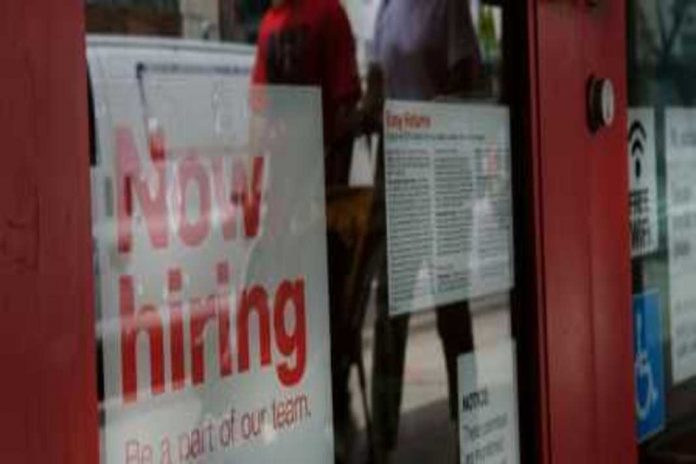
Wages rose 3.2 percent, year on year, more than keeping pace with inflation…
(AFP) The United States continued to add new jobs last month but at a slower pace, another sign the economy is weakening, while the jobless rate held steady, the government reported Friday.
The result, which came with a sharp downward revision for June, confirmed labor markets have cooled this year from their breakneck pace in 2018.
US employers added a net 164,000 workers in July, still solid and largely in line with expectations.
The jobless rate was unchanged at 3.7 percent, the Labor Department reported.
But the job gain in June was revised down to 193,000, slower than the 224,000 originally reported — bringing the average over the last three months to 140,000, well below the average of 223,000 recorded in all of last year, according to the new data.
Wages rose 3.2 percent, year on year, more than keeping pace with inflation as the supply of available workers fell, squeezing employers seeking to attract and retain talent.
Despite the slowdown in job creation, the pace was more than enough to keep the jobless rate trending lower.
It has been below four percent for 15 months.
The labor force grew slightly even though the unemployment rate was unchanged, suggesting new job seekers who came off the sidelines easily found work.
More rate cuts?
The jobs report comes as the Federal Reserve faces stinging criticism over its decision to cut interest rates this week in the face of generally sound economic data.
Fed Chairman Jerome Powell has said clouds gathering on the horizon — Trump’s trench warfare with trade partners and the world’s slowing economy — justified a preemptive strike.
If the trade uncertainty continues to hit the economy, and if employment slows any further, the Fed could feel justified in cutting rates further.
“The economic data are yet again subordinate to political and market events, which have made a September easing more likely,” said Ian Shepherdson of Pantheon Macroeconomics.
“The economy does not need lower rates if the threatened tariffs ultimately are not imposed, but if they happen, just in time to crimp hiring ahead of the holidays in the expectation that higher prices will hit spending, then the Fed likely will act.”
US hiring in July increased notably in financial services, including insurers, health care and also in auto manufacturing, which added 7,200 workers after a string of moribund months and high-profile layoffs.
Meanwhile, layoffs and slower job creation was concentrated in key economic areas: the long-suffering retail sector, as well as information services, utilities, mining and construction.
Hiring also slowed sharply in transportation, warehousing and construction, while the average workweek in manufacturing fell to 40.4 hours — down more than half an hour since a peak in August.
© Agence France-Presse. Liberty Headlines editor Paul Chesser contributed.

